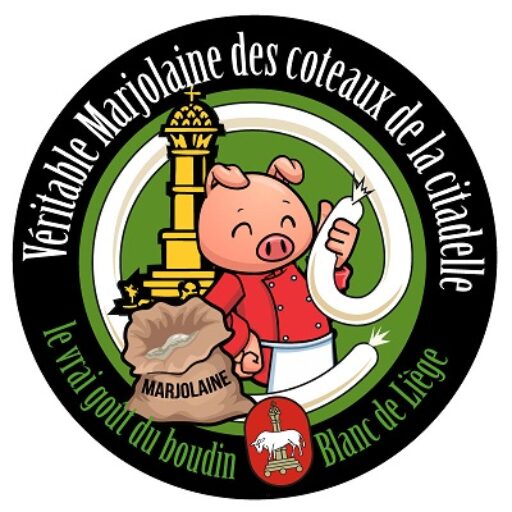La Marjolaine des
|
Marjoram (Origanum majorana L) is a perennial or annual plant depending on the region it is produced in. It is quite similar to thyme in both its odour and its chemical composition. It belongs to the Lamiaceae family, and the shoots when grown reach a height of 20-50 centimetres.
The plant is characterised by small white or mauve flowers in the form of a chalice and oval downy leaves of green-grey colour that grow in pairs. A wild plant, it is commonly known as oregano, as in the Greek etymology of its name oregano meant « mountain and joy » or « loves the mountains ». Marjoram gives off a powerful aroma that combines scents of basil, mint and thyme. It needs exposure to the sun and cannot handle prolonged humidity or cold.
This is why market gardeners have chosen production sites on the slopes around Liège. The production of marjoram is rooted in ancient shale embankments on sites of former coal mines that closed in the 1960s. With good exposure to sunlight these soils retain heat, making them ideal for marjoram, which usually prefers more southerly climates.
Properties: Marjoram was well-known to the ancient Greek herbalists, who appreciated it for its tonic, aperitif and fortifying qualities, as well as helping to relieve rheumatic pains. Marjoram is recommended for dealing with sleep disorders, stress and joint pains; it also helps to stimulate the appetite and regulate certain digestive disorders. It is used as a tranquiliser for the nervous system, is highly recommended for edgy, depressive or anxious people and for frequent migraine sufferers.
Marjoram also contains a certain number of vitamins, among them K and E, as well as minerals such as iron, calcium, manganese and essential oil…. The leaves and flowering tops of marjoram are also used for herbal medicine or culinary uses.
In the kitchen: Marjoram is often used in fresh or dry Mediterranean cuisine. It comes under the category of « Provence herbs ». It unleashes all its fragrance when chopped with a knife and added just before serving, although you can also make use of its scent by heating it gently in olive oil, which will capture its aromas. Dry marjoram leaves are trimmed (i.e. the shoots are removed) just before use.
They blend harmoniously with charcuterie, and particularly « Boudin Blanc de Liège » (Liège white sausage). The marjoram from the Coteaux de la Citadelle (slopes of the citadel) gives roast white meat a flavour that is highly appreciated by both gourmets and children. It is also used in infusions, in calf’s head, richly stewed, meat balls Liège-style, and pâtés de foie.
Some interesting facts: For tens – even hundreds – of years, the charcuterie butchers of Liège have successfully used local trimmed marjoram at the last minute to give aromas to white sausage, pâtés, meat balls, calf’s head in turtle sauce, etc.… In recent years, locally-grown marjoram has been used less and gradually replaced by imported varieties or by oregano, to the detriment of the flavour of the charcuterie. We can find the reasons for this situation in the fact that the growing, collection and trimming of Marjolaine des Coteaux de la Citadelle® are difficult operations. They cannot be done mechanically and require a high level of manual work.
Even so, some passionate market gardeners, helped by the CIM (their professional association) and the producers’ association, have decided to start growing marjoram on the slopes of the Citadel in Liège again. This new, non-trimmed, marjoram conserves its aromatic properties for several years.
ORDERS: Belgian and European butchers, chefs, and gastronomes can now order cases of Marjolaine des Coteaux de la Citadelle® ready for trimming at the price of €30/kilo plus VAT (6%). Delivery all over Belgium by BPOST: €5 per order via the website
